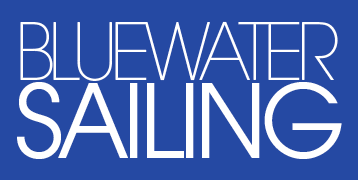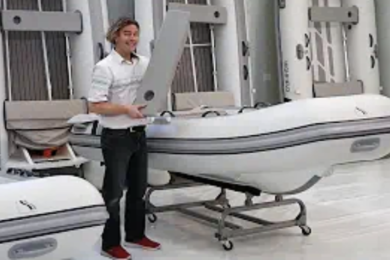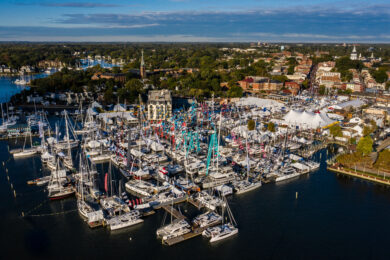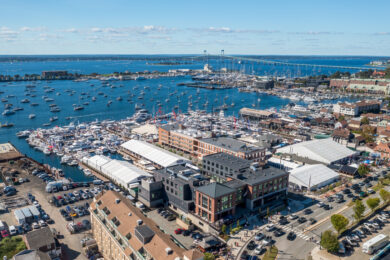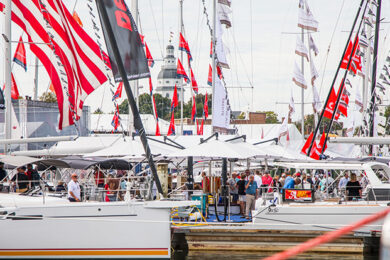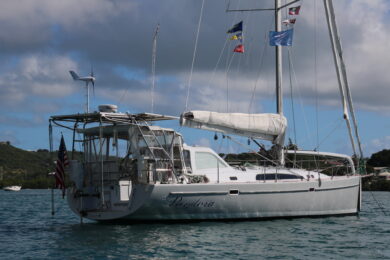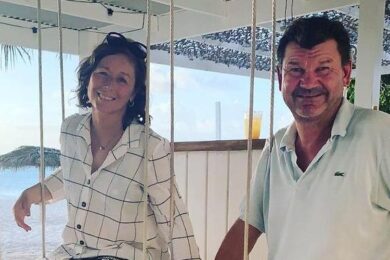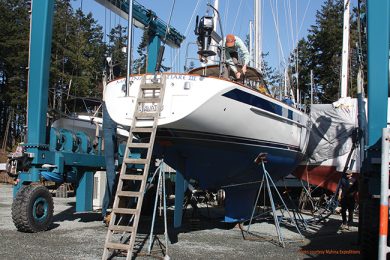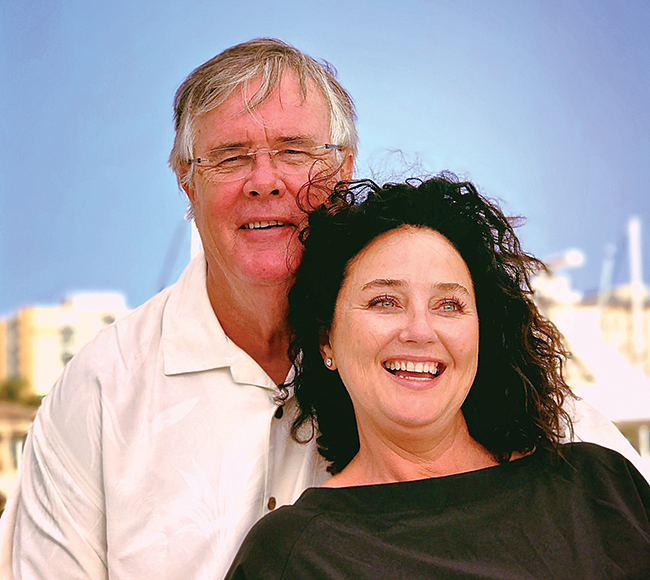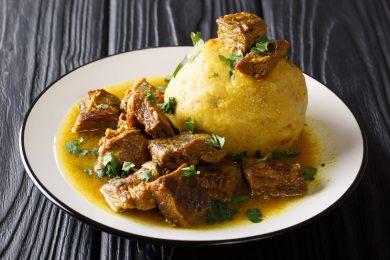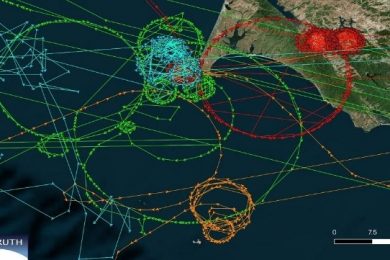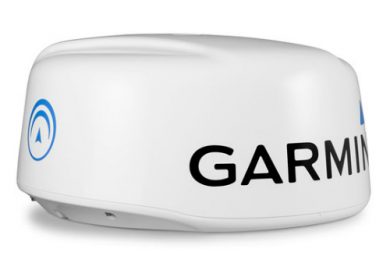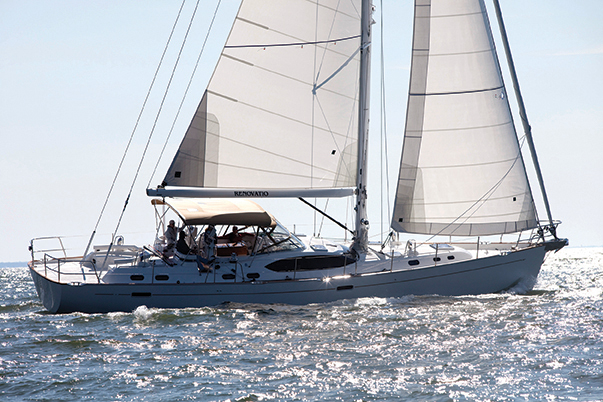(published April 2017)
It’s time for our semi-annual review of sail construction and material options. While most of this is well documented, an overview is handy given the bewildering variety of ways available to build a sail. In the good old days, the whole debate centered on the weight of sailcloth you were going to use. It is a lot more complicated now and you have to sort through configurations that can as much as double the price of the base model. The good news is that the sails are also much better. You will be blown away (no pun intended) by how much better your boat sails with new sails no matter what the flavor.
All cruising sailors list durability as a primary design criteria so no matter how you build it this is a given. Each of the approaches we will discuss will be durable. Ease of handling and performance are next on the list. Performance in terms of pure speed is usually played down; after all we are carrying our house around with us so how fast can we expect to go?
More important are issues of control. How can we minimize weather helm and heeling and create a balanced, easily steered boat? How can we make a partially furled headsail or a reefed mainsail be effective? How can we make our sail handling systems work better? Each of these criteria comes down to good design and engineering backed up by one critical factor; stretch. Minimizing stretch is the key to maintaining sail shape, reducing helm, heeling and making sails versatile and easy to use. It also makes sails nice to look at.
This is where the design of a sail and the fabrics you choose come into play. There are three basic options: Classic cross cut construction that uses panels running luff to leech of pre-made woven materials; tri-radial construction where panels are oriented out of the three corners in an attempt to mimic the primary load pattern in the sail; and, membrane (Fusion, Stratis, 3DL/i, etc) where sails are built as an integrated whole with a custom fiber network using a variety of fiber types. As you might guess, as you move up the progression stretch is reduced.
 CROSS CUT
CROSS CUT
Tried and true, woven polyester (usually referred to by the Dupont trade name “Dacron”) is how the majority of cruising sails have been built over the last 50 years. It is still the standard on small to medium size boats. Though tough to tell apart, woven polyester comes in a wide variety of grades, and you guessed it, stretch characteristics define quality. All of the major producers have various levels. What makes the best, lowest stretch option is a combination of ingredients.
First, all polyester yarn is not created equal. Some yarns have higher tenacity (breaking strength) and higher modulus (the ability to resist stretch). The best fabrics use high modulus fiber in both directions (warp and fill). The second element is yarn size. Smaller is better, since it allows the weave to be tighter with more fiber packed into a given space. It is primarily the tightness of the weave that allows the material to resist stretch when pulled at an angle to the fiber (the bias). In a cross cut panel layout, there is lots of bias loading so in many ways this is key to shape holding. Shrinkage also plays a role. As the raw woven goods are finished they undergo heat and pressure to help pack the fiber. More shrinkage helps tighten the weave.
Finally, the resin finish that is applied in the final stages helps fill in the gaps and keep the weave together. More resin, which makes the fabric crisp and firm helps minimize stretch, though it does keep the fabric from having that “soft and easy to handle” feel. Less expensive tiers of woven polyester use larger fiber bundles of lower modus fiber, less fiber, and generally coarser weaves. A woven polyester sail built out of the best materials rates about a “five” on a scale of one to 10 (with 10 being the best) in terms of shape holding. Performance deteriorates relatively rapidly as resin is flogged out of the sails and UV breaks down the yarn. If durability is measured in the useful life of the sail, you should expect 3,500 to 4,000 hours of use. This is highly dependent on the amount of sun and flogging the sail is subjected to.
TRI-RADIAL
Orienting the panels out of the sail’s three corners means that the primary strength of the material needs to be in the long (warp) direction, as opposed to the short (fill) that you would find in a cross cut sail. For the most part, this suggests a composite material that doesn’t rely on a tight weave for bias control and can use big straight yarns in the warp.
If you want to use woven materials in a tri radial sail, the problem is more difficult. In weaving a woven material, the warp fiber is stretched out on the loom and the fill fiber is rammed through. The fill remains straight while the warp gets bent around it. This over and under pattern that the warp is forced into is called “crimp.” Crimp creates stretch, since the yarn has to straighten out before it can bear load. This is why cloth woven on a loom is inherently “fill” oriented.
To make a woven fabric with its strength in the long direction you want to eliminate crimp and increase the size of the warp yarn, but this creates other problems.The larger fiber reduces the tightness of the weave, which leads to more bias stretch. For years, sailcloth producers have struggled with this conundrum. Until recently the best result was a “balanced” material that could be used in smaller, lower load applications. The latest generation of “radial woven” materials uses large warp yarns or mono filaments and overpowers the fill yarns in the shrinkage process, pulling the warp straight and forcing the fill to go over and under. This provides sufficient warp strength for higher loads, but the bias characteristics suffer.The hope is the more efficient tri-radial panel layout will minimize bias stretch.
Another way to add strength in the warp direction is to augment the weave with a high modulus ultra-high molecular weight polyethylene (UHMP) fiber (Spectra and Dyneema) inserted at intervals. Hydra Net, developed by Dimension Polyant, is the best known of these hybrid wovens, but several suppliers now have versions. These enhance the high load stretch resistance, though they don’t do much at low loads. The other downside is cost since the material is very expensive. They make for a very rugged sail since the UHMP fibers also have very high tenacity, good abrasion resistance, and excellent UV properties. There are versions offered for cross cut construction as well, but these do not take advantage of the tri radial panel layout.

Composites are the logical answer to tri radial construction. A fiber network of large, straight yarns with a warp orientation bear the primary loads. Exterior skins of woven polyester (taffetas) protect the fiber and provide chafe and toughness. A polyester film, equally strong in all directions provides bias strength. Fibers can be of any type and range from standard polyester right up to carbon and UHMP. Compared to a standard woven material, a polyester composite might have 20 to 40 percent less stretch along the warp, and nearly double the bias resistance. A carbon composite might provide five times the stretch resistance. It is no wonder that as boats get bigger and loads go up that these high modulus options begin to make sense.
The downside of composites has always been the potential for delamination and mold and mildew. Modern composites have come a long way and delamination is now a rare event. Mold and mildew still can grow, particularly in a sail that is left furled up in a warm, wet environment. However, internal treatment of the adhesives and exterior coatings has helped address the problem.
The bottom line is that tri radial construction improves shape holding and shape life. On that same one to 10 scale, you could be looking at ratings between six and nine, depending on fiber type. Just as important, a four-year-old composite sail can look virtually unchanged, something which cannot be said for cross cut woven sails, which deteriorate relatively rapidly. Shape life will be dramatically better. Cost will increase 25 to 30 percent for a tri-radial option, up to 40 percent more for a polyester composite and be double the cost for a high modulus composite. Part of what makes the sails more expensive is that in cutting the triangles and trapezoids that make up a tri-radial there is 20 to 25 percent fabric waste.
MEMBRANE
The ultimate way to build a composite cruising sail is to not be limited to pre-made materials and the jig saw puzzle of a tri-radial panel layout. On bigger cruising boats, this is now the standard approach. Membrane construction allows sails to be designed as a one piece whole. A network of fiber or filaments of any type and quantity can be applied in any direction to address loadings in a smooth, continuous fashion. Taffetas, films, or other custom surfaces can be used to encase the fibers. Strength can be introduced to address reef or partially furled loadings. Though polyester can be used, typically membranes utilize high modulus fibers like aramids, Technora, Vectran, Dyneema, or carbon.
As a testament to durability, this is the standard construction for sails for boats over 60 feet and super yachts where size and sail loadings demand higher strength and where ambitious sailing schedules mean lots of miles. On our performance scale membranes top the charts at a 10. They are inherently smoother than a paneled sail. Fewer seams also allow for less water egress so mold and mildew issues are greatly reduced. Costs are higher; typically double the cost of a base woven sail, and the degree of customization has a big effect. Highly specialized design tools are required to properly engineer the structure and intelligently get the right amount of fiber in the right places. It also takes tremendous investment in production facilities to create a laminated, one piece membrane sail. Given these economic constraints, high end membrane construction is limited to a small number of sail making firms who have the experience, personnel and resources.

PERFORMANCE MATTERS
No matter which construction type and material you select, you will find the latest cruising sails stay intact as a triangle, and more importantly perform better as a critical airfoil far longer than sails from previous generations. Just keep in mind as you consider new sails that staying in one piece is a relatively low bar. The high bar is how well and how long they will perform as a critical airfoil. Don’t kid yourselves that sail shape does not matter because you are a cruiser. With a cruiser’s limited sail inventory and the requirement for a long lifespan, making a great cruising sail is actually a much more challenging design problem than you might think.
David Flynn is a veteran sail maker and experienced racing sailor with Quantum Sails.
